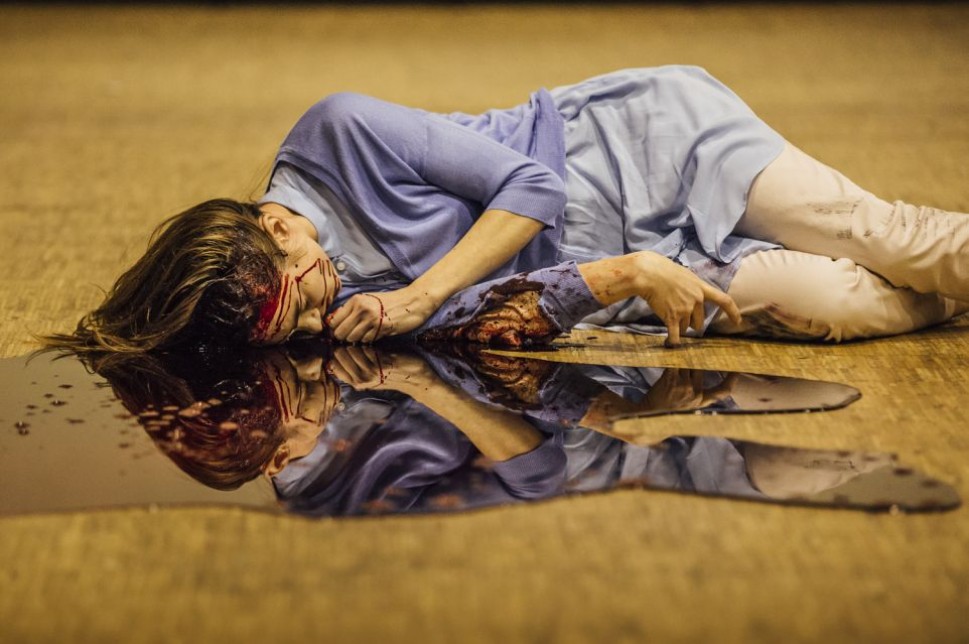Le Metope del Partenone
Romeo Castellucci/ Societas
June 7-9, 2019
We walk into a blank warehouse, grey floors and off white walls. There are some stains, remnants from earlier performances. A few benches line the sides of the room. Everyone is clinging to the walls.
A woman walks in with stage makeup on. It’s hard to tell at first what the injuries are. With her are three individuals in white lab coats. They help the performer down, add makeup to the wounds and spill blood on the gray floor of the warehouse. So much blood. It streams out from her head in little rivers that wind their way to the audience who has gathered in a clump, straining to see. Some people are pushing through the crowd to get a better look.
This is not real, they are telling us with the gesture. This blood is fake. This is a performer.
The makeup artists walk away, and then after a beat, the performer starts wailing, and for a while, she is wailing and we are watching, crowded around her. Then sirens cut through the room. An ambulance rushes towards the victim dispersing the crowd. Some of us run to get out of the way. There is a strange shame in watching this person performing agony. A crew of real paramedics comes and beings to perform life-saving protocols on the victim. She continues to cry out. They remain calm. Eventually, the victim flatlines.
They do not perform urgency or sorrow when they cannot save her. They simply go through the protocols, and then drive the ambulance through the crowd again, scattering us. They reminds us of the reality in what we are watching. People die in horrible ways. Sometimes we cannot save them.
A riddle is projected on the wall. Then, an answer and the corpse rises and stands under it. Again, this is a performance, and in the theater, if we can solve the riddle we can perform a resurrection.
This process repeats itself 6 times. Each gruesome injury prepared first by makeup artists (this is theater, this is a performer) and then treated by real paramedics (but they are performing something true, something that happens).
A woman beside me whispers “I can’t watch this.” And another one farther away, a little louder “why are we watching this” but they don’t stop. We all play our part, staying fixed to each tableau, scattering when the ambulance arrives, regathering, and scattering again when it leaves. Each time, the pathway of the audience becomes a performative gesture and a riddle in and of itself. Why are we drawn to the spectacle of horror, to death?
At the end of the performance, a man drives a cleaning vehicle into the space, and begins to clean the floor. What is left after all of this death? After our collective thirst for blood is quenched? A pedestrian action, a performance of the often hidden labor, the maintenance of the space that keeps the cycle going again and again and again.
Photo: Guido Mencari

